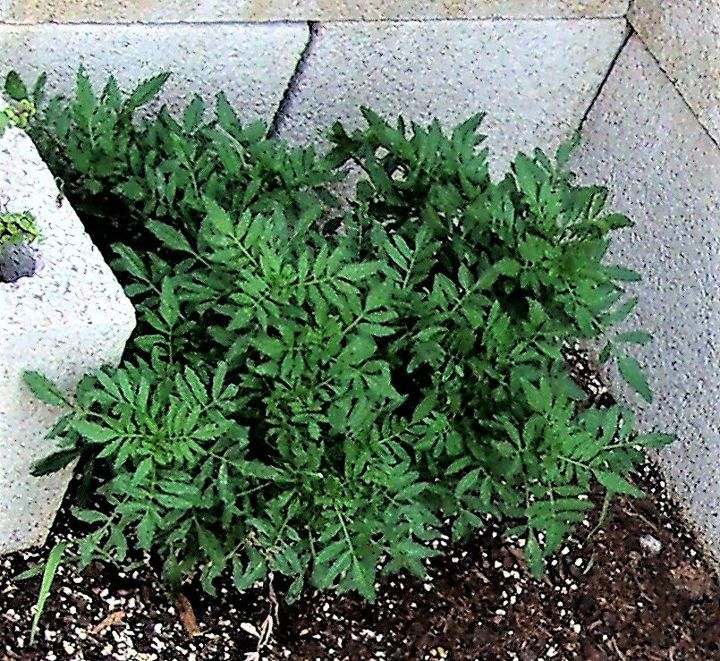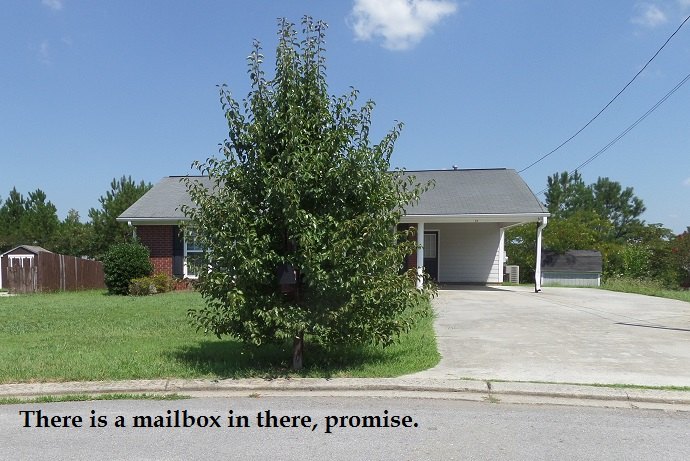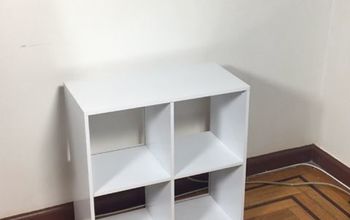How can I edge a raised patio when covering with brick?
We are covering our old cracked concrete patio with brick pavers, using BROCK pads underneath instead of sand. 2 sides of the patio meet the house, but 2 sides are raised, meaning higher than the ground by a few inches. L How do we prevent the bricks from moving on those 2 sides? What kind of edging? One area goes to the steps, the others go to flower beds. We don’t want anything raised that someone may trip over. We’ll use polymer sand after all the bricks have been laid which will help secure all the bricks somewhat. I still think we need something for those 2 sides that have the drop-off. Ideas? Thanks!
Related Discussions
GNATS - How to get rid of them?
Somehow my house and garden got tiny gnats that killed my fuchsia plant and fly everywhere. I have tried ALL the Web recommendations - soap and oil dishes, sand in th... See more
Marigolds growing! Should I pinch the buds?
My marigold plants are growing. I heard that pinching the buds until Autumn will allow them to grow without killing the plant. Is this true?
Growing garlic
Growing our first garlic, should we wait until the leaves are drying out before we pick it? Husband picked first one today along with our first potatoes.
How to keep mice out of your garden?
Hi everyone, I have mice in my garden destroying my vegetables and I have also noticed them in the barn and shed. Please can someone tell me how to prevent them from ... See more
What's the best flower/plant to grow in Texas?
I know that opinions vary, but what's your opinion?!I have great luck w Rosemary plants. Green all year long.
How can I keep gophers from undermining my brick paver patio?
I have gophers in my yard and they have dug tunnels under a paver walkway causing sections of it to collapse. When I build the new walkway if I put chicken wire down... See more
Best way to kill bush/tree after being cut down?
Just moved into a new home. There was a huge thorny bush dragon devouring the mailbox. I slayed the dragon but it is trying to rise up again. How can I make sure it's... See more




Can you maybe bolster the bricks using the same bricks under?
Hi Jan, Use a scaffold board into the ground to finish flush with the bricks and therefore hold them in place.
Hi Jan!
https://www.hunker.com/12172833/how-to-build-a-raised-patio-out-of-brick-pavers
https://www.pinterest.com/explore/patio-edging/
According to several paver manufacturers, paving blocks can be installed on top of concrete without mortar if you first lay down a 1/2″ to 1” bed of coarse sand. The process is nearly identical to laying a paver patio over ground.
However, this type of installation should be done with caution, since drainage, settling, and cracking can be a problem. Keep these tips in mind when laying pavers over a concrete patio:
Drainage: The biggest problem with laying pavers over a concrete slab is the inability for water to drain through the blocks and down into the earth. Before you begin, make sure your concrete is properly sloped and doesn’t puddle. Keep this drainage slope in mind when adding your pavers, and make sure the edge that drains water stays low and permeable. You can also drill small drainage holes through the concrete every few inches, to help any puddling water seep into the ground.
Sand in Joints: When you’re finished laying the blocks, firm them up by filling the joints with polymeric sand. While sand joints are still permeable, if properly set they can help excess water run off the surface rather than puddling.
Edging: Like any other type of installation, a concrete slab paver patio needs to be firmly edged, to keep the sand and pavers from settling and squishing around. However, your edging needs to allow for water to drain; if it’s watertight, your patio could turn into a bowl of water when it rains.
Semi-Mortared: Rather than dealing with edging, some
builders use mortar or adhesive to hold the perimeter course of pavers in place. To do this, you’ll need a clean perimeter around the sand bed, so the blocks can stick directly to the concrete. Make sure the mortar and sand bed are the same thickness, so the blocks will be level. This method can create a nonpermeable edge that could cause water to puddle under the pavers.
Height: Your new patio will be up to 3” higher than the original concrete slab. Be sure to plan for transitions to other areas, especially if the patio adjoins your house. Most building codes specify how far a masonry patio should be from a home’s siding, and you may need to install flashing to keep water away from the house.
Concrete Condition: If the concrete slab is broken or in terrible shape, you might be better off ripping it up and starting over.
Not for Driveways: In general, this isn’t a good method for driveways. The underlying concrete doesn’t allow for the pavers to give, so they’re more likely to rock and crack.
Patio Extension: You can also extend the size of your patio, by digging out the soil around it and installing a proper gravel and sand bed, then screeding and tamping the sand across both the old and new areas to make it level. However, keep in mind that the non-concreted areas will be more likely to settle, and over time your patio may become uneven.
Don’t Rule Out Mortar: If you’re new to this project, don’t be intimidated by the prospects of mortaring a permanent paver patio. In my opinion, mortar would be less work!
you don't say how high the whole thing will be cement,pads,bricks--------they make metal edging or may need it custom cut then put in with rebar to hold it all then need to add soil around outside of edging to create long gradual slope to prevent erosion;you can make cement curbing not too high so it doesn't hold water on patio but enuf to hold everything in place then do soil like with metal edging;add large boulders rocks around edges to create higher edge so no one will trip or fall twist ankle on drop off; create cement/cinder block knee wall planter/benches around edges(drainage holes under bottom for standing water included)this would add seating hold it all in place and stop anyone from having trouble with drop off.